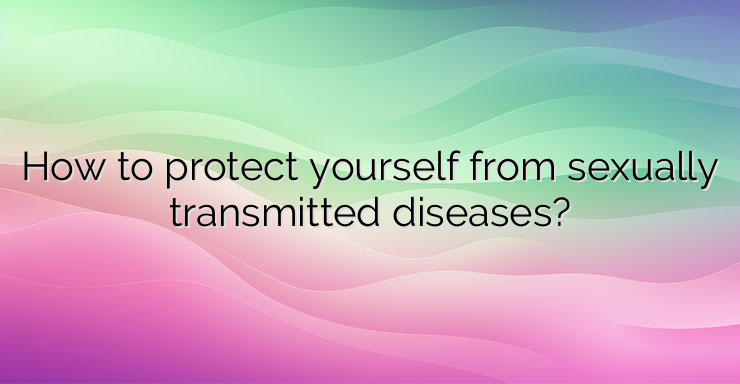Along with the flu and the common cold, sexually transmitted diseases are among the most easily spread infections. The reason for this is that the majority of them are extremely asymptomatic, which is why they are diagnosed later when complications have already occurred. According to the World Health Organization (WHO), more than 1 million sexually transmitted infections are acquired every day worldwide, with more than 290 million women carrying Human Papilloma Virus (HPV). STDs can be caused by a bacteria, virus, fungus, or parasite. Bacterial infections include syphilis, gonorrhea, chlamydial infection, chlamydial lymphogranuloma; to viruses – human papilloma virus (HPV), human immunodeficiency virus (HIV), herpes simplex virus (HSV), hepatitis B and hepatitis C virus (HBV and HCV); to the fungal – candidiasis, and to the parasitic – trichomoniasis. Among the most common sexually transmitted infections are HPV, chlamydial infection and gonorrhea. Sexually transmitted diseases in a large percentage of cases are asymptomatic, which makes them very difficult to diagnose. Among the symptoms that can indicate the presence of a problem are chronic dull pelvic pain, pain during sex, pain and burning when urinating, changes in the color, amount and smell of vaginal discharge. With trichomoniasis and gonorrhea, the vaginal discharge can acquire a yellow-green color, with human papilloma virus infection – brownish, and with vaginal candidiasis, the vaginal discharge has the appearance of sliced cheese. The appearance of an unpleasant smell, redness, itching, etc. is possible. The transmission of sexually transmitted infections occurs primarily through sexual contact – during vaginal, oral and anal sex, but it is also possible through contact and blood, for example, when using common utensils with an infected person, in drug addicts who repeatedly use needles. In pregnant women, transplacental transmission of the infection to the fetus, complications during pregnancy and diseases of the newborn are possible. The diagnosis of a sexually transmitted disease is made after a visit to a gynecologist and the implementation of the relevant tests – Pap smear, microbiological examination of vaginal discharge, DNA analysis of vaginal discharge for HPV, blood tests for hepatitis B and C. For some of the sexually transmitted infections, it is possible to fully cure – gonorrhea, syphilis, trichomoniasis, but with others such as HPV, HIV, HSV, complete cure is not possible and only remission of the disease is achieved. Prevention is the most important to protect against sexually transmitted diseases and their complications. For the greatest security, it is recommended: 1. Avoiding frequent changes of sexual partners – the greater number of partners increases the risk of infection many times over. Despite compliance with this rule, the risk of contracting a sexually transmitted disease if your permanent partner has had numerous sexual contacts before you is very high. For this reason, it is recommended to familiarize yourself with the sexual history of your partner,as well as prophylactic examination for sexually transmitted diseases when starting a new relationship. 2. Use of barrier methods of contraception – the use of condoms is mandatory, because in addition to pregnancy, condoms also prevent the spread of sexually transmitted infections. 3. Preventive visits to a gynecologist – important for the timely diagnosis of some sexually transmitted diseases, which are otherwise asymptomatic and can lead to serious problems in the future, including infertility. 4. Avoidance of riskier sexual practices that cause tears and bleeding – due to the more delicate mucous membrane in the anus area, practicing anal sex increases the risk of tears and contracting sexually transmitted infections. 5. Prophylactic testing for hepatitis B and C – again because of its asymptomatic course, there are annual free screening programs for testing for hepatitis B and C. 6. HPV vaccination – infection with the human papilloma virus carries a significant risk of developing cervical cancer. Vaccination against HPV, however, does not exclude regular preventive measures to limit the disease. The European Medicines Agency has approved the use of three HPV vaccines – two-, four- and nine-component. They can be administered to boys and girls aged 9 to 26 years in two or three doses. In case of double administration, the second dose should be administered in a period of 5 to 13 months after the first, and in case of triple administration, the second dose should be administered up to two months after the first, and the third – up to four months after the second.They can be administered to boys and girls aged 9 to 26 years in two or three doses. In the case of double administration, the second dose should be administered in a period of 5 to 13 months after the first, and in the case of triple administration, the second dose should be administered up to two months after the first, and the third – up to four months after the second.They can be administered to boys and girls aged 9 to 26 years in two or three doses. In the case of double administration, the second dose should be administered in a period of 5 to 13 months after the first, and in the case of triple administration, the second dose should be administered up to two months after the first, and the third – up to four months after the second.


Leave a Reply